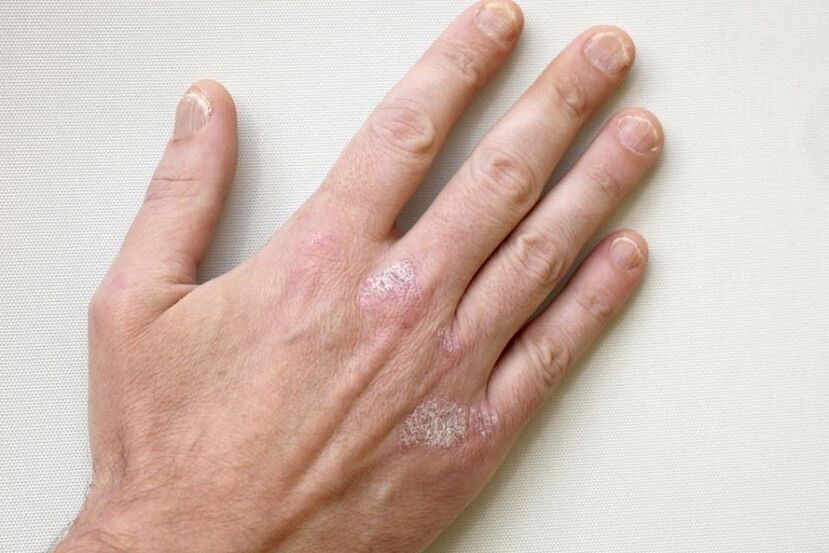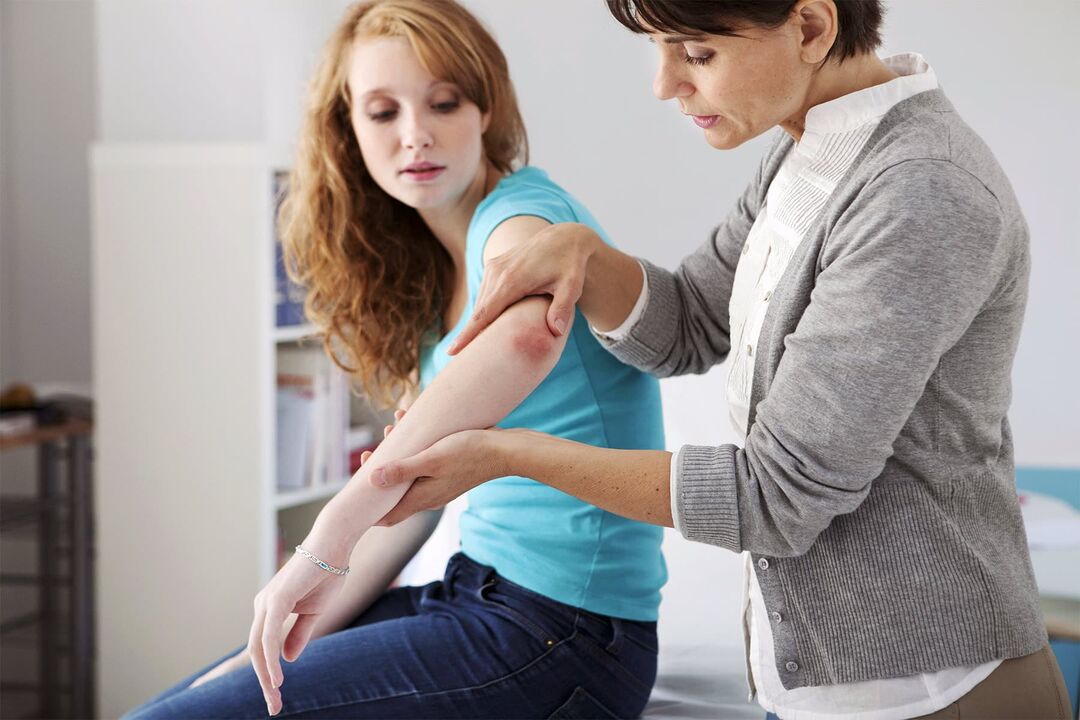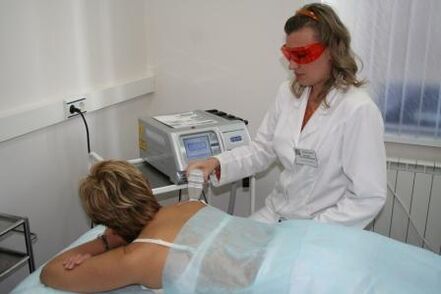In recent decades, dermatology has increasingly dealt with cases of psoriatic dermatitis. Statisticians note that these cases most often affect people with fair skin. And although experts have not yet established an age limit for the rampant disease, the most active phases of the disease are nevertheless recorded precisely between the ages of 15 and 45. As for the prevalence, psoriasis can now affect one in 25 people on the planet, which generally represents about 4. 2% of the entire world population, according to the WHO (World Health Organization) for 2016.
What kind of disease is psoriasis and what external signs does it have?
The name of such a wound was given due to its characteristic external sign - red plaques and papules with scales, which arise as a result of a rash accompanied by itching and inflammation of the skin. The disease psoriasis is also known as psoriasis and has its own quite extensive classification of types, symptoms and causes that provoke the onset, progression and exacerbation of the disease. The general picture of pathology today is such that doctors do not receive a clear idea of its clear origin and methods of treatment. Therefore, doctors must work with the patient to find ways to achieve partial healing.
The definition of what psoriasis is today is accepted by all specialists as a non-infectious disease that occurs mainly for various reasons and must be treated carefully, extremely carefully and under the constant supervision of several specialists, and not just one dermatologist. The word psoriasis itself means "itching" (from the Greek term "psora"), "scabies" (from the English term, which is also spelled "psora"). The disease is diagnosed comprehensively and not just through skin tests or blood tests.
Additional Information:The specificity of the disease, which has not yet been fully explored, is that patients need to prepare for persistent, persistent and long-term healing, as well as for alternating periodic exacerbations with remissions, stages of relief lasting from several weeks to several years.
Classification of types of psoriasis

If experts want to determine exactly psoriasis in a sick patient, what these rashes are on his skin and the unbearable desire to constantly scratch the wounds, what type of disease the disorder belongs to, what the patient suffers from, then experts can focus onFocus on the following: special classification of diseases. Moreover, she is not alone, there are at least four of them today that should be briefly considered for a general overview.
According to ICD-10
According to the International Classification of Diseases in the 10th revision, such dermatitis is divided into the following types:
- Ordinary or tabular. Prevalence – 90-95%. Manifestations – papulo-squamous structures of gray, white and pink color. As they grow, entire "islands" and "lakes" of diseased skin form.
- Generalized pustular or "impetigo", "Tsumbusha" disease, exudative. It begins with blisters and blisters containing fluid (exudate). After rupture, ulcers and self-infections occur.
- Persistent or allopo-epidermal disease, Setton or Crocker acrodermal disease. The liquid or pustular formations in plaques and papules are sterile and do not exhibit widespread self-contamination. Nails and fingers are often affected.
- Palmar and plantar lesions. Small ulcers on the palms and soles that are not self-infecting. This makes it very difficult for the patient to have a quality of life while walking and working with their hands.
- teardrop-shaped. Small purple, pink and gray dots on the body most often appear after severe sore throats, streptococci, pharyngitis and other infectious viral diseases.
- Arthropathic appearance. Damage to the joints of the fingers, hands, knees, lower legs. Prevalence – 10% of all psoriasis patients.
- Other, reversed and unspecified. Smooth patches with a small amount of scales that appear on sensitive skin areas.
According to this classification, which reveals the essence of what this or that type means, what a disease is, what psoriasis is, pathology is assigned a special code - L40. Different numbers can be added to this code to indicate a specific type of disease.
According to clinical parameters
The disease can also be classified according to clinical criteria, which are expressed as follows:
- by location - parts of the body are designated;
- according to clinical pictures - type and nature of psoriasis;
- according to progressive stages - progressive, stationary, regressive disease;
- according to the manifestations in a particular season;
- by area of skin areas - less than 20% of the epidermis is affected, more than 20% or the entire skin.
According to American classification
The US National Foundation classifies psoriasis in the following order when defining the type of disease and its type:
- mild skin lesions – less than 2%;
- average severity of spread – from 2 to 10%;
- severe stage of skin damage – from 10% and more.
According to the PASI index
Another international approach to defining the psoriatic wound, which is in the arsenal of medical diagnosticians, distributes the types of the disease according to the following principle:
- the presence of the PASI index ranges from 0 to 72 values;
- the index shows the severity of dermatitis;
- Only specialists calculate the index.
Doctors can use any of these classifications when determining the type of disease, but practice shows that the ICD-10 system is most actively used. Without a precise definition of the type, it will be difficult for doctors to understand what type of disease psoriasis is and how to treat it.

General symptoms
All doctors and researchers are convinced that psoriasis is not a contagious phenomenon and cannot be transmitted from an affected person to a healthy person. Characteristic pustular-scaly rashes are called papules when their formation was initially a swelling with fluid, which then burst and resulted in a sore in which the shell and scales dried out. "Papula" from Latin means "knot". However, if the redness was not watery, its swellings were compacted over the surface of the skin and they turned into sores due to constant scratching, suppuration and flaking, then these are plaques.
Take note!Psoriasis always causes scaly formations on the surface of the affected skin. "Squama" from Latin means "dandruff", so the diagnosis can be in the line on the examination form: "papulosquamous disease of the epidermis".
Symptoms of psoriasis
When defining psoriasis, we will focus on its symptoms, which can be represented by the following unified list of manifestations:
- Papules are swellings above the surface of the skin that contain infectious or sterile fluid.
- Plaques are red spots that grow and fester over time.
- Plaques can be gray, reddish, yellowish, or spotted with purple.
- The texture of the surface of diseased skin ranges from wet, pustular to dry with scales.
- Flaking and scaling are characteristic of all forms of the disease.
- The patient's general condition ranges from irritability and nervousness to sleepiness, fatigue and apathy.
Stages and degrees of development of psoriasis
The stages not only show the characteristics of the psoriasis disease and its types, but can also give the doctor clues on how to deal with the disease. Usually divided into 3 phases.
Weak stage
- Papules and plaques are rare and solitary;
- there is no unbearable itching;
- There is no severe swelling yet;
- often occurs after stress or a serious infection.
Intensive phase
- defined as Koebner syndromes;
- Lesions appear unexpectedly in various parts of the human body;
- Fusion and growth of papules and plaques to form entire "paraffin lakes";
- Pain and itching are typical during this time.
worsening of the disease
- scale shape;
- dry skin;
- Lesion rashes stop growing;
- scales fall off;
- skin hurts;
- the thickness of the skin where the plaques are located increases.
For reference:Remission is a separate stage and is considered a calming of the pathological condition.
Causes provoking the appearance of the disease
Even if no answers have been found to the question of what type of disease psoriatic dermatitis is and what the causes of its occurrence are, of course there are already certain prerequisites that can provoke the onset of the disease.
Such patterns show the following likely reasons:
- Inherited predisposition.
- Weak immune system.
- Recently experienced severe psychological trauma, exposed to infections, exposed to viruses.
- Side effects of medications.
- A strong change in climatic living conditions.
- Allergies in humans.
- Imbalance of the gastrointestinal tract, endocrine system, excretory and cleansing systems.
- Slow metabolism (metabolism) due to a sedentary lifestyle and poor diet, sleep and alertness.
Important!The sore can also appear after severe sunburn and constant friction from synthetic clothing fabrics in areas of the body where skin wrinkles form. Excessive consumption of poor quality foods (containing lots of chemicals, preservatives, synthetic foods), alcohol, drugs (toxic substances) or tobacco can also lead to aggravation. All this was recorded by the exclusion method - for example, if the patient was excluded from bad habits, his condition improved.

Diagnosis of psoriasis – what is it?
If people who ask about psoriasis, what it is and which doctors they should contact, have already noticed similar symptoms in themselves or in their relatives or friends, they should first contact a dermatologist. An examination is then scheduled, which may involve other highly specialized specialists:
- Histologists – in this case studying blood cells;
- Immunologists – determining the cause of the body's weakened resistance to viruses;
- Endocrinologists – if there are suspicions of disorders in hormonal levels and the functioning of the endocrine system;
- Infectious disease specialists – detecting the presence of infections or viruses in the human body;
- Nutritionists who determine the correct diet for the patient and other specialists.
Diagnostics is carried out using the following mechanisms and techniques:
- External examination of the affected skin areas.
- A blood test shows whether the joints are affected by the disease.
- A biopsy shows the stage and verification (diagnosis of a specific type of disease).
The Internet alone is no help in determining the specific form of psoriasis. In addition, encyclopedic reference books are usually filled out by any Internet user who is familiar with the peculiarities of the disease, as well as by non-professionals.
Take note!A biopsy is one of the most important diagnostic procedures in which a piece of affected skin is removed for laboratory examination. The results show the degree of T lymphocytosis and show which cells are strong and which are weak.
Difficulties in the life of patients with psoriasis
When a patient gets psoriasis for the first time and does not know what type of disease it is, he tends to experience the following diseases that accompany the course of dermatitis:
- Depression;
- inferiority complex;
- Difficulties in social areas – people often believe, out of ignorance, that the disease is contagious and stop communicating with the sick person;
- Cardiovascular diseases – sometimes even heart attacks;
- Pressure imbalance – high blood pressure;
- Diabetes mellitus – type 2 is particularly common;
- You must limit yourself to food and drink;
- You have to get used to an active lifestyle, which is extremely difficult if your psychological mood is depressed.
- physical discomfort – difficulty wearing clothes, taking a shower, taking a bath, moving your arms, legs, sleeping, etc.
All this equally applies to those patients who are not faced with the disease for the first time, but are already mentally ready to face it and work hard to reduce its intensity.
For reference:Remissions (stages of weakening of the disease) can last for several years only with a competent approach to therapy and the prescription of treatment courses, methods and methods.

Methods for treating psoriasis
If the doctors themselves do not fully know all the reasons for the exacerbation of the disease and how to eliminate all this forever, this also greatly affects the mood of the patient himself. But you just need to convince yourself that if the disease cannot be cured, you can improve your quality of life for several years. Therefore, psoriasis can only be cured with an integrated approach of all practices, methods and methods available in nature. Even doctors do not disdain folk remedies if the patient only discusses one or another method with the doctor beforehand.
Traditional methods
As soon as they determine the type of dermatitis - psoriasis is also dermatitis, what kind of disease it is, what type it is - doctors immediately begin specific procedures, which in the end supposedly have a positive effect.
Treatment begins with the following procedures:
- To prevent self-infection, affected areas are disinfected.
- Mandatory relief of inflammatory processes with medications.
- Plaques must be dissolved; special medications are prescribed for this.
- The same applies to the scales - so that they do not fall off painfully, they are softened with lotions, applications with various emollient ointments, tinctures, mixtures.
- Injections and tablets are prescribed - for example, an immunosuppressant that restores the function of the immune system and at the same time improves the psychophysical state.
- They use irradiation with ultraviolet rays, purify the blood using plasmapheresis and other methods.
- Sanatorium resort treatments with mud and salt water. For example, resorts in Israel on the Dead Sea. The method is not cheap, it takes 28 days but is 100% effective.
- Take salt and herbal baths.
- Special diet, exercise.
In addition to the above methods, operations are also performed on the small intestinal valve, which is responsible for cleaning the system. Typically, patients improve after such operations 5-6 years in advance.
Important!The basic drug will always be an antimetabolite from the group of structural analogues of folic acid, which is supplied to the body by intramuscular injection.
Traditional medicine for psoriasis
The disease can also be treated using traditional methods as some plants, seeds and fruits have their own medicinal properties. This is a budget option for those who cannot take advantage of trips to the resort. At home you can prepare healing baths and make various ointments from Kalanchoe, honey and other ingredients. Only the patient should always consult their doctor first. Strict adherence to diet, sleep, work and physical activity is also required here.
Additional measures
The treating doctor will generally prohibit the patient from staying in the sun for more than 6 hours a day with 2 sunbathing sessions. At the same time, the sun should not be at its zenith and burn strongly, otherwise you can only provoke burns and aggravate the condition. In addition to sun exposure, psoriasis can also be temporarily cured with a special diet. The most widely used system today is the Pegano diet. In addition, you should remove all common whims such as tobacco, alcohol, copious amounts of sweets and other hobbies.
Additional Information:A sudden diet is not recommended. In addition, you should always think about your intestines, which must be supported by the presence of fiber and sunflower oils. Therefore, you can eat sunflower seeds and also add various permissible high-fiber foods to your dishes.
5 preventive measures for people with a predisposition to psoriasis
So that a person does not have questions about psoriasis - what kind of disease it is and how to treat it, one should also listen to some recommendations from experts on how to best protect themselves from such a disease. Consider this list of 5 basic recommendations even if you have no predisposition to this type of disease:
- Protect yourself from various infections, dress warmly, do not catch a cold and create the most positive attitude to life.
- Exercise actively, maintain a normal diet, sleep and alertness.
- Give up any bad habits or hobbies like baking and sweets that contain a lot of sugar.
- Wear clothing made primarily from natural fiber materials.
- Any painkillers or other medications should be taken in consultation with a doctor and not self-administered.
For reference:Slow metabolism leads not only to psoriasis, but also to obesity, liver disease, kidney disease, heart disease and other dysfunctions. Therefore, reducing carbohydrates in your diet, taking more walks in the fresh air and exercising will help everyone stay healthy!
There is still no complete cure for this disease; Specialists identify the causes as certain cases of psoriatic disease are registered. Therapy procedures are very long, tedious and difficult. The patient needs not only a change in lifestyle, but also introspection and keeping a diary in which he records all his complaints. Therefore, any delay in contacting doctors will only worsen the situation. Patients should not torment themselves so much, be afraid to show themselves to doctors, it is better to immediately look for a solution to the problem than to let it build up like a snowball.

























